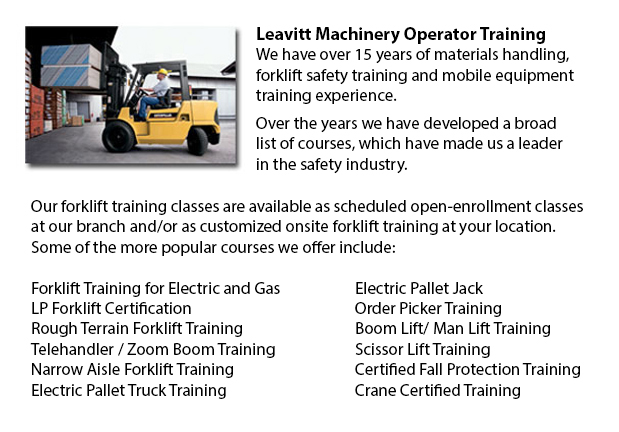
Rough Terrain Forklifts Training Hamilton - There are essentially two kinds of forklifts within the manufacturing business, the rough terrain model and the industrial version. Rough terrain forklifts appeared in the 1940's designed primarily for use on rough surfaces, best for lumberyards and construction sites, providing lifting muscle when there was no paved surface existing.
Typically, nearly all rough terrain lift trucks are run on a propane, diesel or gasoline powered internal combustion engines with a battery used for power. Several makers are experimenting with rough terrain forklifts that consume vegetable matter and run from ethanol. Huge pneumatic tires with deep treads distinguish these forklifts to permit them to clutch onto the roughest ground type without any slippage or shifting.
Some of the first versions of rough ground lift trucks had the ability to haul in excess of 1000 lbs, using blades that could pass under the item, haul it slightly and shift it to another site. After more than ten years on the market, rough terrain lift trucks were augmented with added hauling muscle, increasing the possible load to more than 2000 lbs. Telescoping booms were added in the 1960's, permitting them to stack resources a good deal higher than in earlier years. The telescoping design characteristic is a staple of most rough terrain lift trucks today. Present styles are capable of managing well over 4000 lbs thanks to the continuous improvements over the years. Telescoping capability has also improved with some designs achieving a height of 35 feet. Operator safety has also become a focus with some rough terrain forklifts now constructed are fitted with an enclosed cab for the driver, versus the older open air seating capacity.
The all terrain forklifts available today work just as well on covered floors as on unpaved roads. These rough terrain lift trucks are being marketed for their usefulness enabling establishments to move parts from outside the plant to the inside or vice versa.
-
Scissor Pallet Trucks
Scissor Pallet Truck Training Hamilton - Scissor pallet vehicles are designed for transporting and lifting singly stacked pallets by integrating a lifting system that permits the pallets on the truck to be elevated. This equipment is a first-rate ins... More -
Aerial Lifts
Aerial Lift Training Hamilton - Aerial lifts can accommodate many tasks involving high and tough reaching spaces. Sometimes used to perform routine maintenance in buildings with lofty ceilings, prune tree branches, raise burdensome shelving units or... More -
JLG Telehandler
JLG Telehandler Training Hamilton - In the late 1960's John L. Grove, with his wife Cora embarked on on a cross country excursion in their RV. Recently retired, after spending several years working with his brother to build their crane business into... More -
Nissan Forklift
Nissan Forklift Training Hamilton - Nissan takes immense pleasure in achieving total consumer satisfaction, when their consumer is experiencing one of their many products including cars, trucks, and lift trucks. Nissan Motor Co. Ltd is the parent com... More -
Komatsu Forklift
Komatsu Forklift Training Hamilton - Komatsu Forklift U.S.A. Inc., a member of the Komatsu Ltd. family, has a positive reputation for building robust and reliable forklifts. They are recognized worldwide as a business who has a proud heritage and who... More

Forklift Certification Hamilton
TOLL FREE: 1-888-254-6157
Hamilton, Ontario
forkliftcertificationhamilton.com
Email Us
About Us


